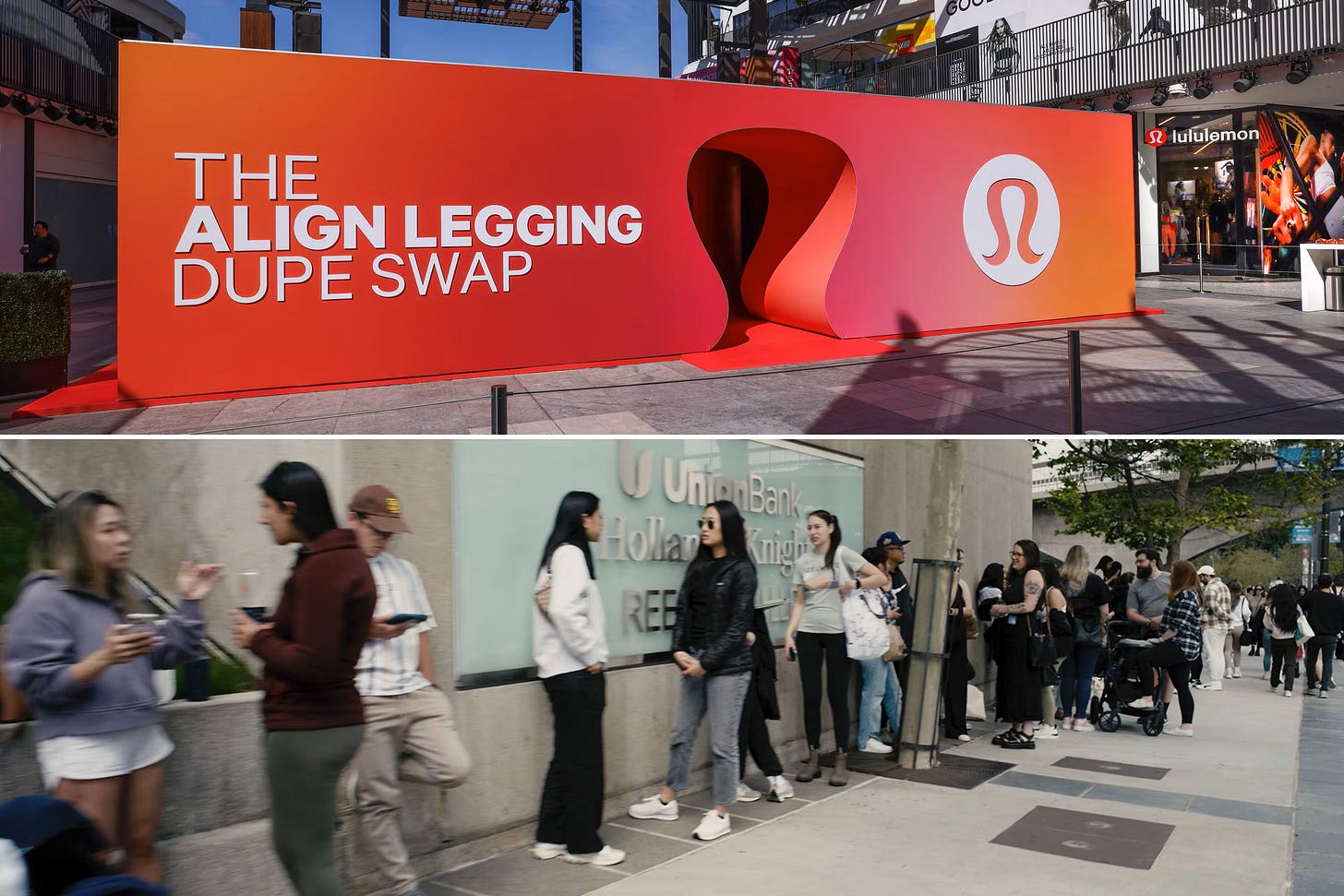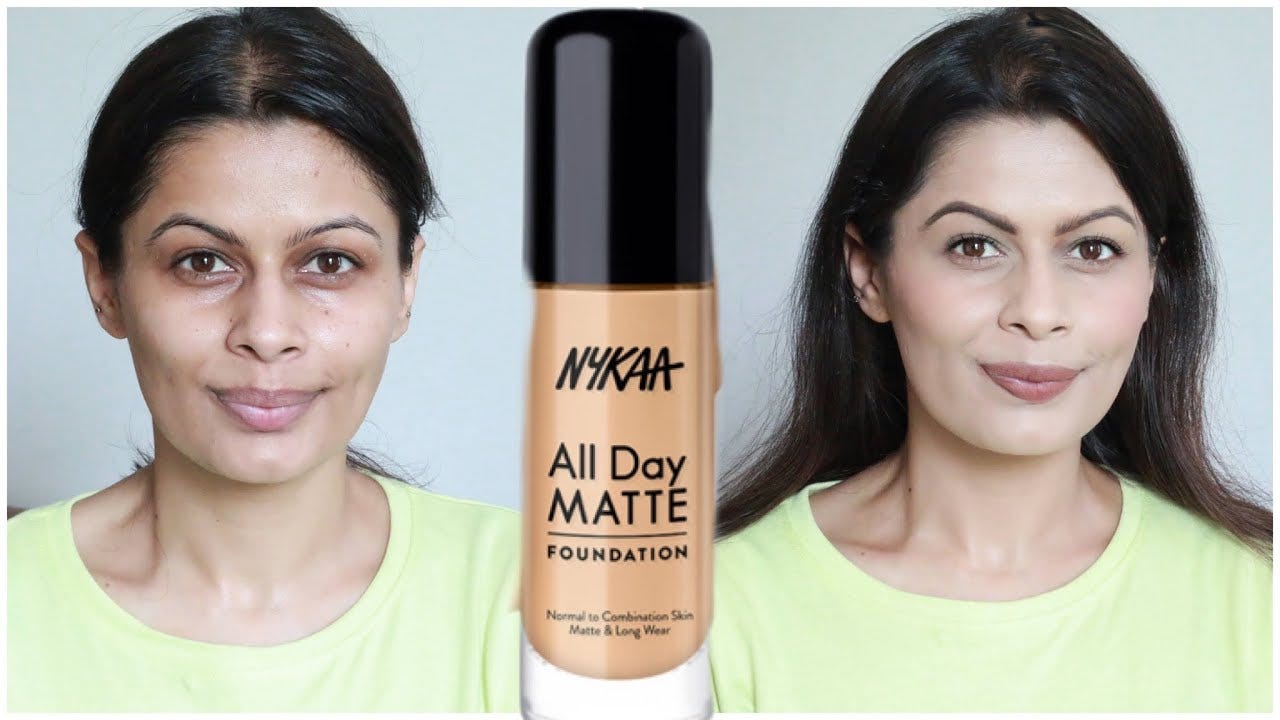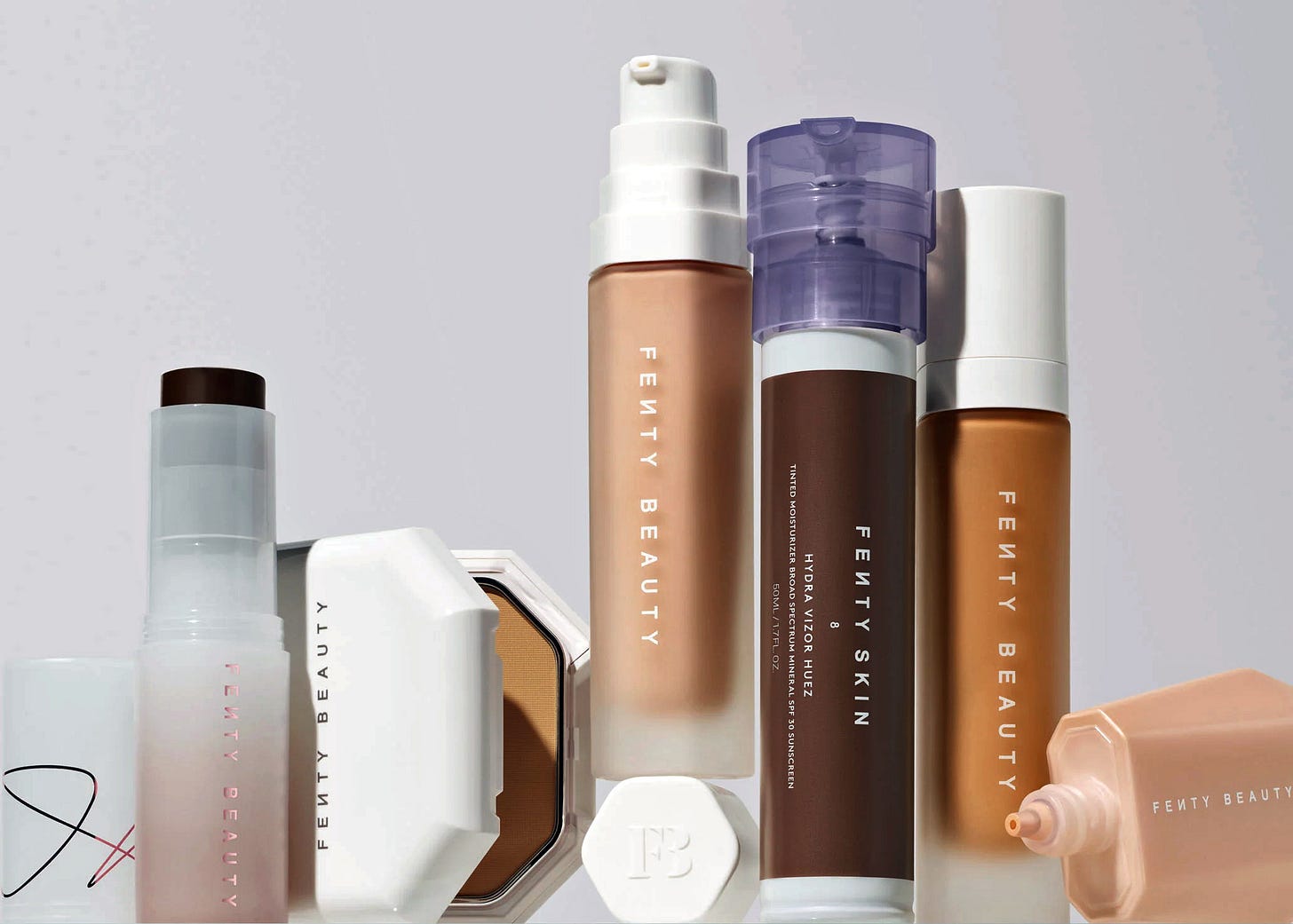Aaliah, a 22-year-old engineering student in Nagpur, performs a daily ritual of aspiration. Every time she carefully applies her ₹299 "Chanel No. 5 inspired" perfume before heading to college, it’s not just about saving money; it’s a visceral rehearsal for the luxury she'll one day afford. Though the fragrance fades within hours, with each spritz, her desire for the original intensifies.
This is the counterintuitive truth about dupe culture that's reshaping India's marketing landscape: affordable replicas are cultivating the most devoted future customers of luxury brands.
The Psychology of Shadows & Desire
"Seeing your shadow makes me desire you more!"
This statement isn't flattery; it's a psychological principle weaponized by successful Indian brands. When Diam Beauty launched their Soft Filter Blurring Pot (₹899/-) as an alternative to the viral Korean Fwee Pudding Pot (priced ₹1600/-), they offered Indian consumers a gateway to premium beauty. Fifty percent of their inventory sold within 15 days, but more importantly, the brand created a cohort of consumers who now knew exactly what texture, finish, and application experience they were missing from the original. The dupe didn't satisfy their craving; it awakened it.
This behavior taps into the "mere exposure effect" but with a crucial twist: dupe culture creates "controlled dissatisfaction." The perfume that fades too quickly, the fabric that almost feels luxurious, the foundation that looks perfect in photos but doesn't last through Mumbai’s humidity - these gaps don't disappoint consumers. Instead, they create a precise awareness of what they're missing, fostering a specific form of longing. You now know exactly what you're missing, and more importantly, you know it exists.
Shunned Shame to Standard Strategy
The transformation of dupe culture in India is a dramatic reversal in consumer psychology. Pre-millennium, purchasing dupes carried a social stigma, with consumers discretely buying cheaper alternatives and attempting to pass them off as authentic. Fast-forward to today: 71% of GenZ and 67% of Millennials actively buy dupes, not out of necessity, but as a conscious choice. Shame has evaporated, replaced by the celebration of smart shopping and democratic access to style.
This shift is particularly pronounced in India's tier-2 cities, where social media exposure to luxury brands is high, but accessibility remains limited. A consumer in Indore or Bhopal today shares the same Instagram feed as someone in Mumbai, creating uniform aspirational triggers. Dupes have become the bridge between exposure and experience.
The Indian Innovation
What sets successful Indian dupe brands apart isn't their ability to copy, but their capacity to enhance. Type Beauty's Hydra Jelly Tints perfectly demonstrate this. Rather than simply replicating Milk Makeup's Cooling Water Jelly Tint, they added pH-reactive ink and glitter variants specifically designed for Indian skin tones and preferences. This represents a fundamental evolution: reinvention rather than replication. The most successful Indian brands understand that sustainable dupe culture requires innovation, not just imitation.
Minimalist Skincare exemplifies this, becoming one of India's most popular skincare brands by focusing on effective formulations at accessible prices. They didn't just copy international products; they understood what Indian consumers needed and delivered it at a price point that encouraged experimentation and loyalty.
Fear to Embrace: How Luxury Brands Adapt
The most fascinating aspect of contemporary dupe culture is how premium brands are learning to dance with their shadows rather than fight them. Lululemon's "dupe swap" campaign, inviting customers with dupes to exchange them for genuine products, was a masterstroke. Over 50% of participants were new customers under 30—those they were gaining through dupes. The affordable alternatives introduced the brand, created product familiarity, and established desire; Lululemon simply converted cultivated aspiration into actual ownership.

Olaplex took an even more creative approach with their "Oladupé" campaign, sponsoring TikTok influencers to promote a fictional dupe. This ultimately led consumers to a landing page revealing the deception and stating, "nothing compares to the original." The campaign went viral, generating millions of views while reinforcing brand authenticity. They engaged with dupe culture while defending their position, creating massive brand awareness without legitimizing actual competitors.

Power and Economics of Partial Experience
Dupe culture's power lies in creating "sensory previews" of premium experiences. When an Indian consumer uses a Charlotte Tilbury foundation dupe from Nykaa's private label, they experience the packaging aesthetic, application ritual, and initial coverage. But as the day progresses and the formula's limitations become apparent (e.g., doesn't photograph as well under studio lights, or doesn't maintain coverage through humid transitions), they don't feel cheated. They feel informed.

This partial experience serves as a specific form of product education. Unlike traditional advertising, which talks about premium benefits, dupes let consumers feel the difference between good and exceptional. That tactile knowledge becomes the foundation for future purchase decisions.
The Indian market's relationship with fragrance dupes illustrates this perfectly. Shelves lined with perfumes "inspired" by international luxury brands teach consumers about fragrance families, longevity, and projection. They prepare customers to willingly pay premium prices for originals. From a business perspective, dupe culture creates an entirely new, unfunded consumer education system for luxury brands. Every purchase of a Rare Beauty concealer dupe from a local Indian brand is an unpaid focus group, developing opinions about premiumness and accelerating market development at no cost to the original brand. Consumers approach premium brands fully aware that they just want the elevated version of what they've already tried.
From ‘Gatekeeping’ to ‘Gateway’: Democratizing Luxury
Perhaps the most significant aspect of modern dupe culture is its demolition of traditional luxury gatekeeping. Pre-millennium India limited access to international trends by geography and economic status, building brand equity on exclusivity. Today's dupe culture has democratized style, challenging fundamental assumptions about luxury marketing.
When an 18-year-old student in Chandigarh accesses the aesthetic of a ₹8,000/- Charlotte Tilbury lipstick through a ₹400/- alternative, she claims her right to participate in global beauty conversations. This democratization expands the original version’s cultural footprint. Every Instagram post featuring a dupe tagged with the original brand's inspiration extends that brand's mindshare. The hashtag #lululemondupes, for example, has generated 150 million views, i.e. 150 million unpaid brand impressions that reinforce Lululemon's position as the standard worth copying.
Strengthening Through Imitation
Here's where dupe culture reveals its most counterintuitive truth: instead of weakening its position, well-executed dupes actually strengthen the original brand's position. When multiple brands create alternatives to Fenty Beauty's complexion products, they make a powerful statement about Fenty's worth: "so good that it's worth copying." This implicit endorsement creates a form of social proof traditional advertising could never achieve. Every dupe validates the original's cultural significance and market position; it's the commercial equivalent of art forgeries; their existence doesn't devalue the masterpiece, but confirms its status as something worth replicating.
As a result, successful original brands are learning to lean into this dynamic rather than fight it. The advantages are clear: an unpaid marketing army, pre-launch awareness, educated consumers, and easier conversion.

Beyond the Dupe: The Future of Desire
As dupe culture matures in India, "post-dupe" strategies are emerging. Sophisticated brands use affordable alternatives as stepping stones to building independent brand equity. They start by creating inspired products but gradually develop distinctive identities that transcend their original inspirations. This evolution suggests that dupe culture might be a transitional phase. As Indian consumers become more educated about product categories and quality differences, they are demanding more from their affordable alternatives. The brands that will survive this evolution are those investing in genuine innovation and quality improvement, not just aesthetic mimicry.
The implications for luxury brands are equally significant. As dupe culture expands their mindshare and creates educated consumers, they'll need to evolve their value propositions beyond just product quality. Experience, service, exclusivity, and brand narrative become increasingly important differentiators when the basic product can be replicated at a fraction of the cost.
The Shadow Economy of Aspiration
Dupe culture represents more than a marketing trend: it's a fundamental shift in how desire is created and fulfilled in contemporary India.
Playing beautifully on human psychology, dupe culture doesn’t cannibalize premium brands. It whispers their allure into the hands - and feeds - of tomorrow's spenders. By allowing consumers to taste luxury without the premium price tag, dupes create a shadow economy of aspiration that benefits everyone involved.
For consumers, it's democratized access to style and self-expression. For dupe brands, it's created sustainable business models built on innovation and accessibility. For original brands, it's developed educated, motivated customers who understand exactly what they're willing to pay premiums for.
For the student applying her Chanel-inspired perfume in Nagpur, it isn't just wearing a fragrance; it’s a daily reminder of an aspirational brand. Every time the scent fades too quickly, every time it doesn't project quite right, she's receiving a gentle education about why the original commands its price.
In this light, dupes aren't competitors to luxury brands. They are unpaid brand ambassadors, working tirelessly to create the next generation of premium customers. The shadow, it turns out, doesn't obscure the original. It illuminates exactly why the original shines so bright.
The brands that understand this dynamic - will be the ones that thrive in the age of democratic luxury. Because in a world where everyone can access the aesthetic, those who can deliver the complete experience become precious - not just premium.






